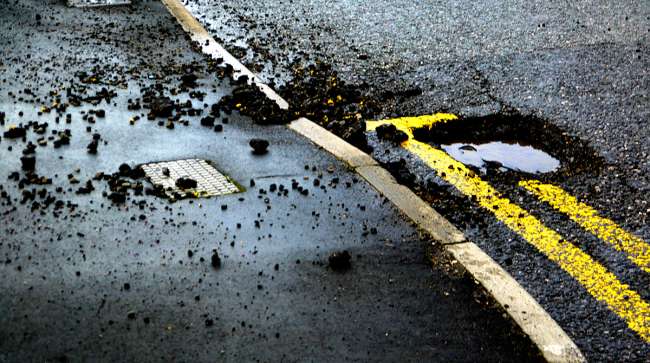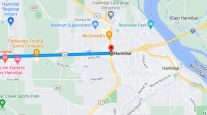Staff Reporter
‘Rapid-Fire’ E-Commerce Demands Better Neighborhood Roads, C.H. Robinson Exec Says

The prevalence of e-commerce will intensify the need for good neighborhood roads in addition to well-fortified interstates, according to an executive with third-party logistics provider C.H. Robinson.
Jordan Kass, president of managed services for the company’s TMC division, described the e-commerce supply chain as “rapid fire,” forcing truck drivers to go shorter distances and make quicker deliveries to people’s homes. For this reason, he said there is a shift in the flow of trucks from highways to neighborhood roads.
“From an infrastructure perspective, we really need to think of volumes and the safety concerns associated with the increased velocity of packages to the front door,” he testified before the Surface Transportation and Merchant Marine Infrastructure, Safety and Security Senate subcommittee on March 13.
C.H. Robinson ranks No. 5 on the Transport Topics list of the 50 largest logistics companies in the United States and Canada.
The hearing comes just one month after President Donald Trump unveiled his infrastructure proposal, which calls for $200 billion in direct federal funds to add with private funds and reach $1.5 trillion over 10 years.
RELATED: Trump’s infrastructure vision still lacks funding source, Sen. Thune says
Dan Gilmartin, executive director of the Michigan Municipal League, said his state’s need for federal funding is as dire as ever.
The American Society of Civil Engineers graded Michigan a D+ on infrastructure on March 6.
Sen. Gary Peters (D-Mich.), who serves as the subcommittee’s ranking member, said the state would need $4 billion annually just to maintain the D+ grade. Gilmartin explained how the spring thaw causes potholes throughout Michigan. He said he has pulled over twice in the past two weeks to examine the damage potholes have wrought on the front end of his car, and added that a friend’s car grille was pummeled by a piece of concrete the size of a baseball.
LOOK OUT FOR THIS POTHOLE!! - NB Dequindre at 13 1/2 mile in Warren. @WWJ950 @FOX2News pic.twitter.com/mWUwSOnZwQ — Charlie Langton (@charlielangton) February 22, 2018
To rectify this Gilmartin stressed the importance of a strong federal partner and a solvent Highway Trust Fund, which assists states with maintenance and construction projects. Improvements in fuel consumption and shifting driving habits have contributed to the account’s steady decline, prompting several transfers from the nation’s general fund in recent years to remain solvent.
“Our transportation infrastructure in Michigan is as bad as it’s ever been. This year is a special kind of ugly. It has gone from a difficult experience to a ‘times are frightening’ one,” Gilmartin said. “Understanding that you’ve got a partner and a source of revenue is very important. Infrastructure is infrastructure. It doesn’t matter what type of community you’re in.”
RELATED: Michigan county plagued by potholes waits for Trump to deliver on infrastructure
RELATED: Michigan’s D+ infrastructure grade signals funding need, lead engineer says
Trump’s plan would rely on states to shoulder most infrastructure funding efforts with solutions such as public-private partnerships and tolls. There are no tolls in Michigan, and Gilmartin said that probably will not change because the state does not have as much cross-through traffic as neighboring Midwestern states.
Kyle Schneweis, director at the Nebraska Department of Transportation, represents a state that does not have tolls. He said Nebraskans would probably not support tolls.
Tolls would also probably find minimal support within the freight industry, according to Kass. He said most major businesses and large shippers have technology platforms that map routes, and these systems almost always choose the option that does not involve tolls. Also, because most carriers operate between one and four trucks and do not have a large office staff, accounting for toll costs would be administratively burdensome.
“I don’t think [tolling] would be popular with carriers or shippers,” Kass said.
RELATED: Business groups say time is now to increase gas tax for roads
The American Transportation Research Institute’s study on the most congested freight bottlenecks in the nation offers a good starting point for government agencies and private companies who are deliberating where to invest infrastructure funding, said Kass.
ATRI’s study, released in January, rated 100 locations in the United States with the greatest bottlenecks, measured by a combination of speed and volume.
“The vast majority of freight here in the U.S. is still shipped via truck. Period. End of story,” Kass said. “Knowing that we have limited funds, if we did have to pick a priority, I would point us to that report and say, ‘Let’s fix surface transportation.’ If there’s one clear role for the federal government in transportation, it’s on the freight side.”




